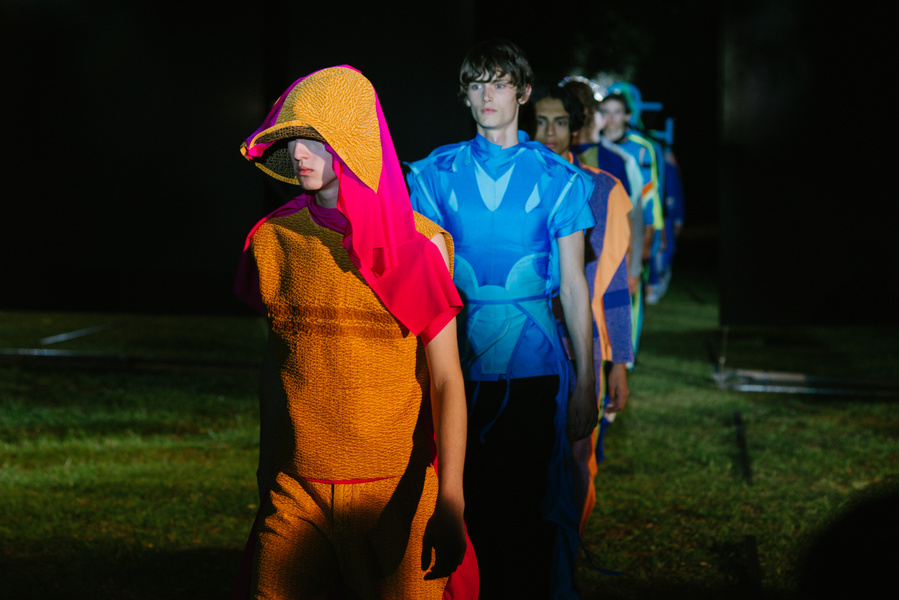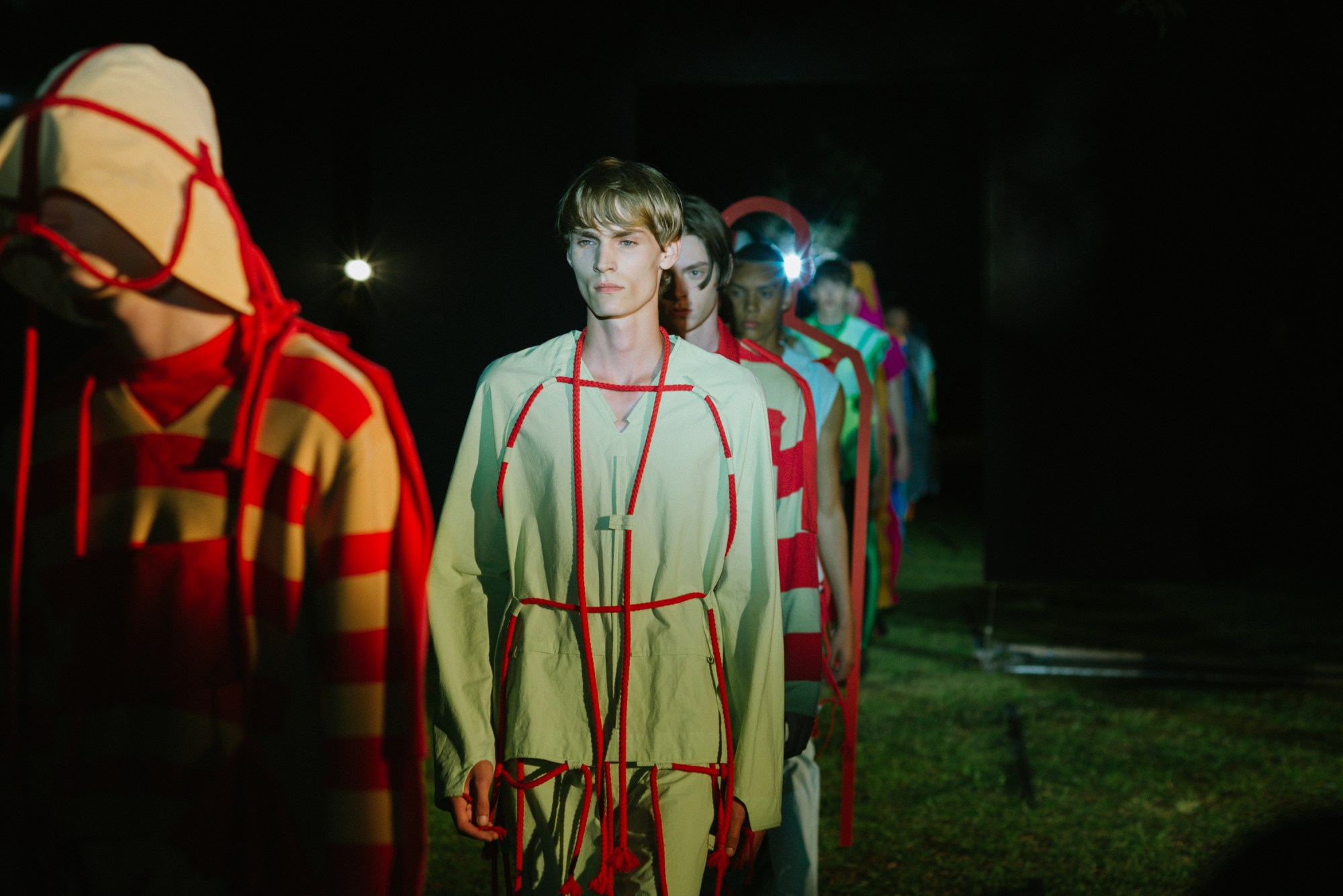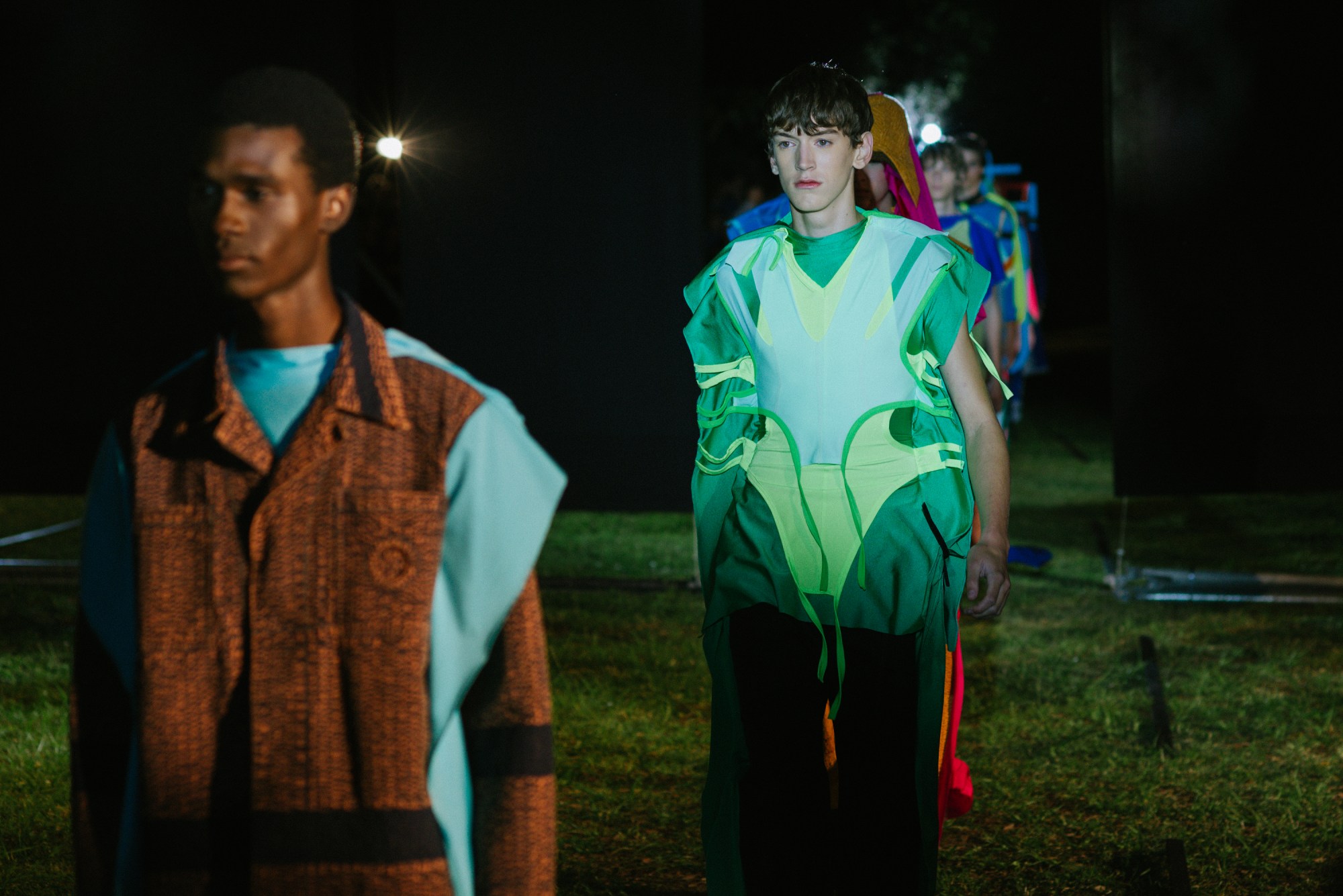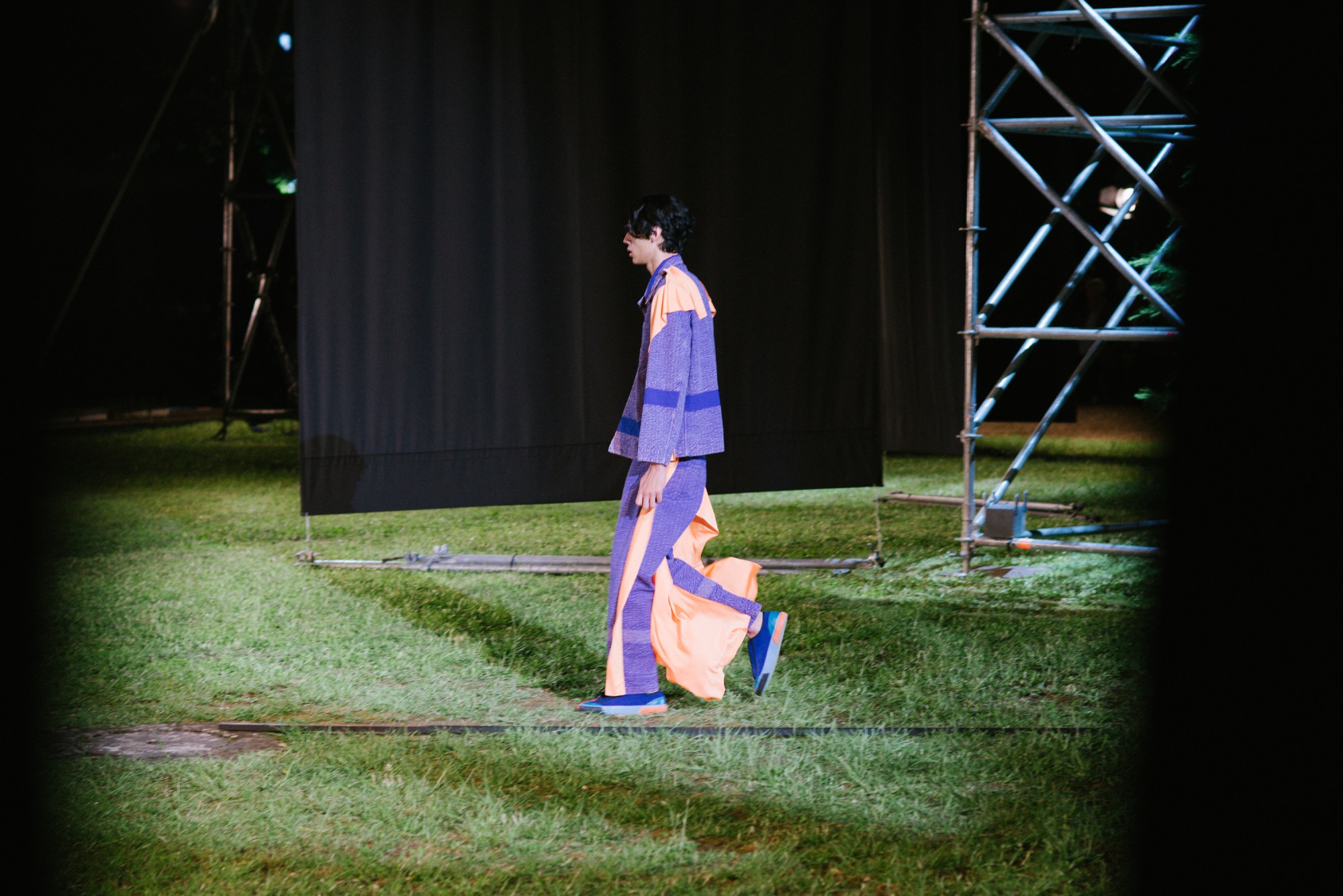Who?
Marrying concepts of uniform and utility, function and emotion, restraint and freedom, Craig Green‘s cult-like vision has provided some of the highest of highlights of London Fashion Week Men’s since autumn/winter 13. For a designer continually inspired by uniform, both functional and imagined, the realities and spiritualities of dress are at the forefront of his mind. While his shows transports the frow to other worlds and the journey can challenge their emotional state — Craig’s spring/summer 15 show was so viscerally powerful that it reduced many to tears — his shapeshifting signature collage of believers, fighters and followers have won him critical and commercial success at every turn, and earned him British Menswear Designer of the Year at the Fashion Awards, twice. For spring/summer 19, the London born-and-based talent left his home city to follow in the footsteps of Jonathan Anderson, Virgil Abloh and Raf Simons as the the guest designer at Pitti Uomo, Florence’s biannual menswear tradeshow. “It was a once in a lifetime opportunity,” Craig Green explained backstage. London’s loss was Florence’s gain as Craig challenged perspectives and provided a sartorial shake-up of the senses.

Where?
A forgotten corner inside Florence’s must-visit Boboli Gardens — home to a collection of sculptures dating from the 16th through the 18th centuries, with some Roman antiquities — was transformed with scaffolding and David Curtis-Ring’s 21st century sculptures. “When we came to Florence, we were initially looking for the types of unused spaces that we’d used in London — factories, places of work, schools — but then thought it would be better to do something that we’d struggle to in London, show outside,” Craig explained. “Then it was about showing somewhere classically Florentine, but twisting the experience.”

What?
Like the setting, this was a collection that provided experience twists at every turn. As Craig played with perspective and transformed the familiar into the otherworldly, there were multiple ways of seeing. “I love horror,” he explained post-show out of the darkness of the Boboli Gardens, “and sometimes the scariest thing you can think of is reality, while sometimes the best thing you can think of is something you don’t know, like an afterlife or a heaven.” From the sculptures to the copy, pasted and manipulated prints, much of the collection evolved out of a photo of a woman walking on the street that caught Craig’s eye and ignited his imagination. “At the moment the shot was taken, the outline of another woman behind her created a kind of halo effect around her body. We loved positive idea of an angel or a halo but we also loved the darker side too, this idea that you’re being followed and that it also looked like the chalk outline of a body at a crime scene. One one side it’s a protective aura and on the other it’s death.” Craig delved deep into this duality as the collection took us on a journey from honest, hard workers through to a transcendent trippy finale that hinted at a “better place”.

For the opening utilitarian looks he was inspired by the uniforms of cleaners, surgeons, postal workers, but even the most simple tabard or smock can be magical in the transformative mind of Craig Green. “They’re a bit like modern day angels,” he explained. “They’re the people that hold your life in their hands, the forgotten saviours. There’s something so beautiful in that simplicity of protective clothing. People can become angels in their own lives through working hard and doing good.” Later on, memories of these everyday angels were remembered through subtle imprints of their uniforms placed on shirting, “like ghosts trapped inside the garment”.

As utility evolved into fantasy and the ordinary became extraordinary, shapes continued to be collaged, fabrics layered and prints distorted. Nothing was as it first appeared. The trippy tie-dye ending applied the perfect punctuation. Not quite a full stop, they hinted that there was more to come. “The prints at the end almost provide a 3-D effect because they are three layers of prints which are moved slightly to look as if the print is vibrating,” Craig explained. “They look like a door or a portal into which you could escape into a better place.” Green’s collections have always come in a series of three and spring/summer 19 marks completes the latest triptych. “The first was a dark idea of paradise, the last explored the worry of time and this one hints that the only thing you need is another person or being.” All we need is Craig Green.

Wow!
“We collaborated with people for the first time on the actual collection,” Craig explained. This four-look capsule of deconstructed knitted Nike Flyknit fabric marked the first time the technology had ever been used to construct garments. “It’s the first stage of the project,” he added, hinting that there’s more to come.

